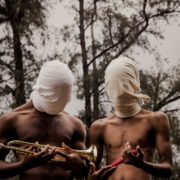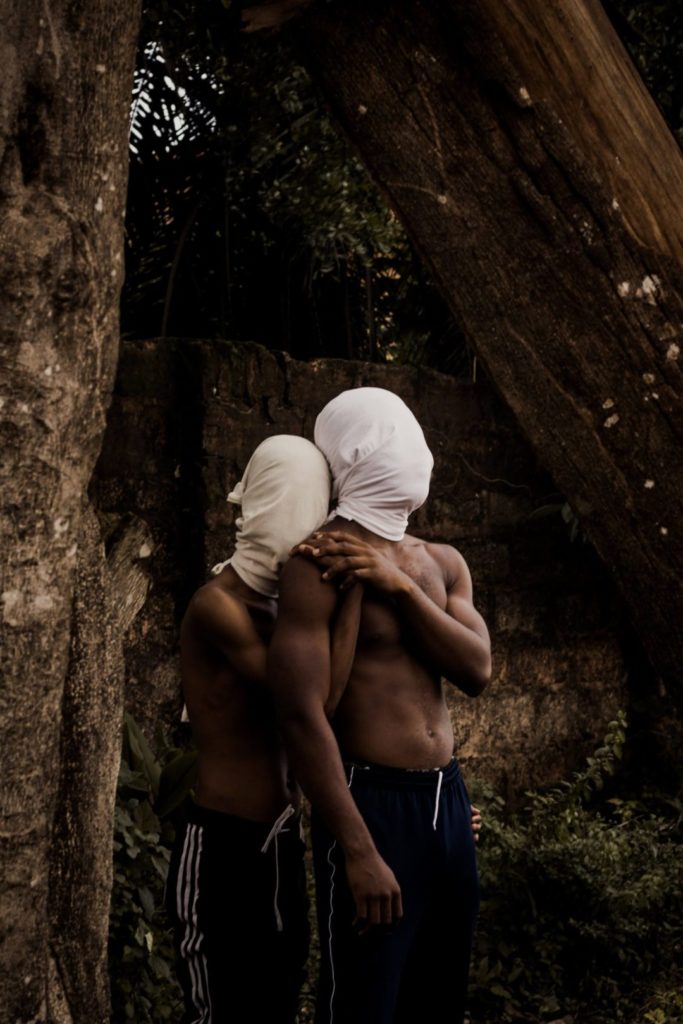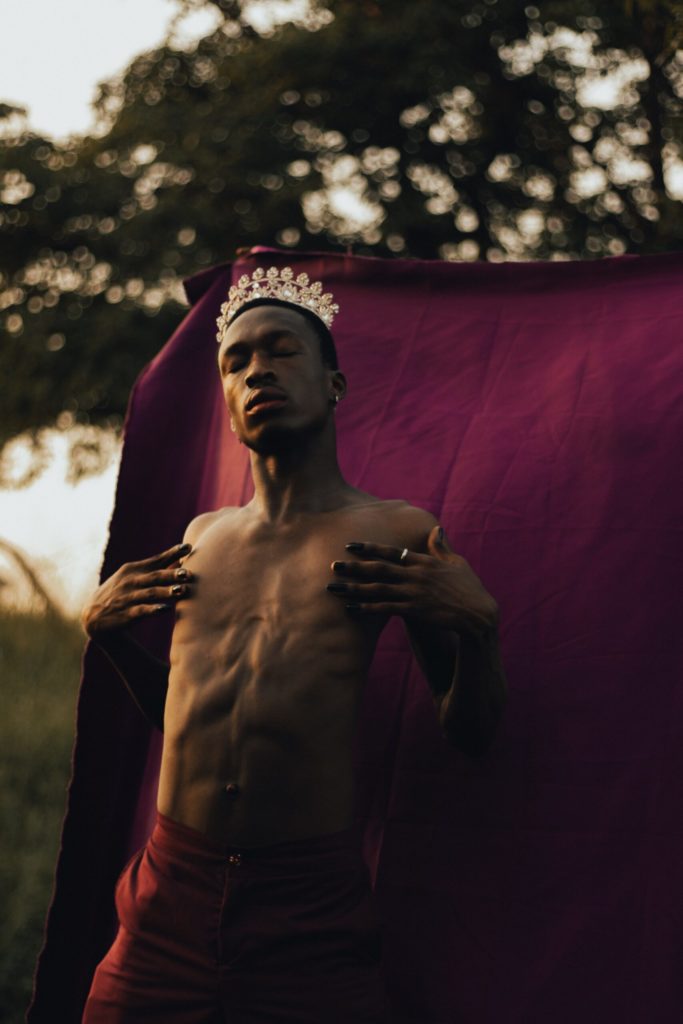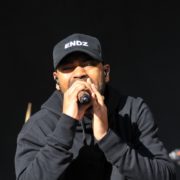Meet Rachel Seidu: The gender-bending Nigerian artist, exploring fluidity and identity through photography.

“There’s no story that I will not tell because that’s just what my photography is built around.”– Rachel Seidu
Contribution by Blossom Maduafokwa.
If you ask 23-year-old Rachel Seidu who she is, she will be sure to tell you one thing: that she is a visual storyteller, bringing to light the stories of Africans through the (literal) lens of photography. A Lagos and Benin-based artist of both Nigerian and Ghanaian heritage, Rachel only picked up a professional camera as early as 2020. Even so, she has already been named as one of seven 2021 Young Contemporaries of the infamous Lagos art center Rele Gallery, as well as having photographed the likes of Seun Kuti, musician, and son of Afrobeat legend Fela Kuti. What’s more is that she did all of this while attending the University of Benin, of which she’s still in her third year.

Rachel Seidu is also someone who identifies as a “gender bender” – a term that was given to her by a friend – in a Nigerian society that expects gender to be very rigid. “I’m a masculine-presenting woman,” Rachel says to me. “I’ve been called different names just because of the way I look, most especially because of my voice …For me, I feel like I wear clothes that I’m comfortable in, but I’ve been called several names because of that.” Because of her own “gender deviance” and her desire to portray stories through photography, Rachel has dedicated her craft to carving out space where gender fluidity amongst Nigerians is not insulted, but celebrated.
“I feel like queer stories are not being told enough in the whole world generally, sef, how much more in Nigeria that’s a very dangerous, homophobic country?” Rachel begins. “The few people that are bold enough to be out, that are not closeted in this country, they should be celebrated.”
She does exactly this with her project WO SI WO Y3 B3MA?, the title written in Ghanaian Twi and translating in Nigerian pidgin to “You be Man So?” Her project title plays with the idea that being an African man can coexist with things that are not considered “manly.”[1] Rachel centers on Tochi and Chukwuma, who are featured wearing traditional lace tops and gentle headwraps, clothing typically understood as “feminine.” The two men, one of whom is wearing makeup, interact with each other with vulnerability and tenderness, completely shattering the gender expectations set for Nigerian men.

In another project “The ChrisBill,” Rachel focuses on Chris Bill, a man who, with dyed hair, a glittering clasp earring, and lipstick, poses sensually in a way that Nigerian men are typically not allowed to.
Rachel makes sure that her work is for queer people, first and foremost. When I ask her about the idea of creating gender-fluid art to “teach” straight people, she says, bluntly, “Everybody should just educate themselves. We’re in the 21st century, for fuck’s sake.” Part of that project is her dedication to not showing her subjects from an angle of pain, but instead one of peace and joy. “I’m trying to show you that they’re regular people,” she says, “That they’re allowed to be happy.”
“I believe that queer people are not seeking validation from straight people. So, if we’re celebrating queerness, we’re celebrating queerness. It has nothing to do with straight people.”
Rachel Seidu

A huge part of Rachel’s philosophy is that breaking gender barriers through art preserves Nigeria’s queer history and can be saved for the country’s future. “Maybe, at some point, Nigeria is going to stop being homophobic, and these pictures are going to play a big role in showing the pioneers of this movement from the beginning…I’m trying to keep this part of history intact.” She also says this as a youth who both witnessed and documented Nigeria’s #ENDSARS protests of last October, where, for maybe the first time in history, queer and trans Nigerians publicly delcared that #QueerLivesMattered and could be not excluded from the police brutality conversation. It’s clear, then, that Rachel partially understands her art as a historical duty to queer Nigerians, in that she is making sure the world will know that they exist, that they always have existed, and that they matter.
What can we expect from Rachel Seidu in the future? Well, she says she has a few photography projects coming up, and that she wants to get more into filming (I asked her, jokingly, if I could write the screenplay for her next project, and she answered in the affirmative). Still, we know for sure that she will continue to place gender fluidity and sexuality at the center of all of her art. After all, she declared to me firmly, “All my work from now till eternity will always contain queerness.” So, it’s as simple as that.
“I don’t even think that your queerness and your identity as an African are the same things. Because do straight people say their straightness is tied to African-ness? Why are we saying that queerness is a foreign concept and not African? That’s bullshit. If you read African history, way back, you’ll see that queerness has always been in Africa, before the white man even dreamt of entering here. It has always existed.”
Rachel Seidu

To support a young Nigerian artist, you can buy prints from Rachel Seidu here.
Contribution by Blossom Maduafokwa.
Check out the GUAP Arts & Culture section, to discover new art, film, and creative individuals.





![ZINO VINCI’S ‘FILTHY & DISGUSTING’EP BRINGS YOU TO THE CORE OF THE ARTIST [@ZinoVinci]](https://guap.co/wp-content/uploads/2023/10/Zino-4.jpg)





![Remel London’s [@Remel_London] “Mainstream” is a must attend for upcoming presenters!](https://guap.co/wp-content/uploads/2017/02/REMEL-LONDON-FLYER-FINAL-YELLOW-COMPLETE-1.png)